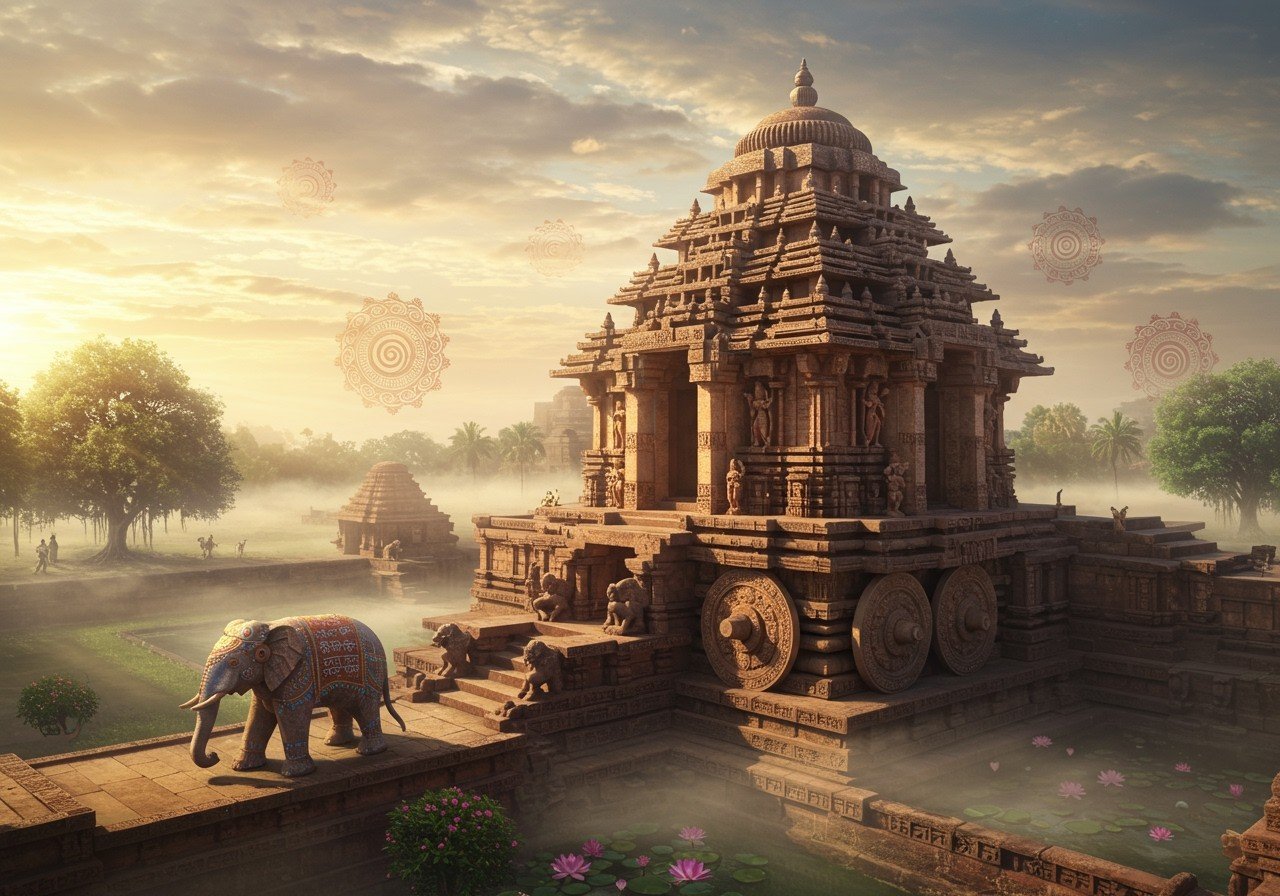
The Eastern Ganga Dynasty, reigning from the 5th century to the mid-20th century in Odisha, India, left an enduring legacy of architectural splendor. Their temples and edifices showcase the ingenuity of ancient Indian artisans. This blog delves into the architectural wonders of the Eastern Ganga Dynasty, exploring the magnificent temples of Odisha and the iconic emblem that embodies their reign.
Historical Overview
Comprehending the historical context of the Eastern Ganga Dynasty is essential to appreciating their architectural achievements. The dynasty, with powerful rulers like Indravarman I and Narasingha Deva I, governed Kalinga (present-day Odisha) from their capital at Kalinganagara. Their influence extended across Odisha, Tamil Nadu, Karnataka, Kerala, and Andhra Pradesh. Their rule fostered cultural and religious growth, particularly between the 11th and 15th centuries, with rulers like Anantavarman Chodaganga Deva becoming patrons of art and architecture. This era, shaped by Hinduism and Jainism, witnessed significant architectural progress.
Architectural Style
Eastern Ganga structures possess distinct architectural characteristics. Constructed primarily from sandstone and granite, their signature Kalinga style features elaborate carvings, soaring spires, and intricate sculptures. Key elements of Eastern Ganga temples include:
- Vimana (temple tower): The vimana, a prominent feature, often rises to impressive heights, showcasing intricate carvings and sculptures that depict deities and mythological narratives.
- Jagamohana (assembly hall): The jagamohana serves as a gathering space for devotees, often featuring ornate pillars and detailed carvings that complement the main temple structure.
- Natamandira (dance hall): The natamandira, dedicated to dance and performance, often features elaborate carvings and sculptures depicting dancers and musicians, reflecting the dynasty’s patronage of the arts.
Temple carvings frequently portray deities, mythical beings, and floral motifs.
Significant Temples
Among the most renowned temples constructed by the Eastern Ganga Dynasty are:
- Konark Sun Temple: A UNESCO World Heritage site, the 13th-century Konark Sun Temple is famed for its chariot-shaped design and intricate carvings, attributed to Narasingha Deva I. Learn more about Odisha’s sacred spaces and traditions.
- Jagannath Temple in Puri: This sacred Hindu temple, central to the annual Rath Yatra festival, stands as a testament to the dynasty’s architectural prowess and religious devotion. Explore another spiritual journey in Odisha: the Sarala Temple.
- Ananta Vasudeva Temple in Bhubaneswar: This temple dedicated to Lord Vishnu showcases the architectural style typical of the Eastern Ganga period.
- Mukteswar Temple: Celebrated for its intricately carved archway, the Mukteswar Temple exemplifies the dynasty’s artistic finesse and attention to detail.
These temples possess immense historical and cultural significance.
Emblem of the Eastern Ganga Dynasty
The Eastern Ganga Dynasty’s emblem, often featuring a lion motif, symbolizes their power and sovereignty. The lion, representing strength, was closely associated with the dynasty’s rulers. This emblem adorned coins, inscriptions, and temple sculptures. Its continued presence preserves the dynasty’s heritage.
Construction Techniques and Innovations
The Eastern Ganga Dynasty employed advanced construction methods and innovations. They utilized precise engineering to align structures like the Konark Sun Temple with cardinal directions. Interlocking stones ensured structural integrity without mortar. Their artistic innovations in sculpture distinguish their temples. Sophisticated water management systems, including tanks and wells, were integrated into temple complexes.
Legacy and Preservation
The Eastern Ganga Dynasty’s architectural influence on Indian culture is profound. Preservation efforts, spearheaded by governmental and non-governmental organizations, are ongoing. However, conservation faces challenges such as weathering and erosion. These temples remain vital centers for religious practices and tourism. Continuing research and archaeological investigations are uncovering further insights into the dynasty’s architectural mastery.
Sacred Idols: A Link to the Eastern Ganga Legacy
The architectural splendor of the Eastern Ganga Dynasty continues to inspire modern Hindu worship. Poojn.in offers sacred murtis that reflect this rich heritage. The Dhana Laxmi Ganesh Ji Murti (4-inch height) and the Ganga Shiva Murti (33 cm), crafted from pure marble dust, embody the same meticulous detail found in Eastern Ganga temples. These murtis are ideal for home temples and personal worship spaces, fostering a spiritual connection to ancient architectural traditions. The Ganga Shiva Murti, especially, resonates with the strong Shaivite influences evident in temples like Konark and Lingaraj. Explore other Shiva murtis available at Poojn.in.
Crafted using traditional methods, our marble dust murtis offer both authenticity and affordability compared to stone sculptures. They allow you to preserve the artistic legacy of the Eastern Ganga period in your home.
Conclusion
The architectural marvels of the Eastern Ganga Dynasty stand as a testament to India’s rich heritage. From the elaborate carvings of the Konark Sun Temple to the sanctity of the Jagannath Temple, these structures reflect a profound commitment to art, religion, and culture. The dynasty’s emblem, with its powerful lion motif, continues to symbolize their strength and enduring legacy. Preservation of these architectural treasures is paramount, ensuring future generations can appreciate their grandeur.


